
This past weekend, I went on my ideal mini-vacation—a 3-day excursion to Queen Elizabeth National Park (QENP) in the Western Rift Valley of Uganda along the border of the Democratic Republic of the Congo (DRC). I booked the trip a few weeks ago, as I knew my time here was winding down and a safari was at the top of my list of things to do this summer! I was able to see the Big 5 on safari in Zimbabwe and South Africa in 2015, but I had yet to see a male lion in person. This topped my list of “things to do,” and I got so much more out of this trip than I anticipated.
Day 0:
I booked the safari through the Red Chilli Hideaway Hostel (which is actually more like a hotel), located on the south side of Kampala bordering Lake Victoria. As the safari was leaving at 6:30 am the following morning, they offered me a free room for Friday night! Because our internet died in the office, Diana was gracious enough to let me leave a few hours early so I could enjoy the pool at Red Chilli and get some sun. They also served delicious pizza by the pool, which I enjoyed, of course.
Day 1:
The next morning started before dawn at 6:30 am as we set off southeast from Kampala on the Masaka highway toward the DRC. I slept all the way to the Equator (about 2 hours). We stopped here to take pictures, as the rest of our tour group (4 Belgian girls and a German dad and daughter) had never been to the Equator! As this was my 5th time crossing the Equator (!) I took the chance to grab coffee instead. We then continued on, passing through Masaka (where I had visited with my office for the UN OHCHR conference a few weeks before), the turn off for Lake Mburo (good memories from last month here!), Mbarara (the second largest city in Uganda), and finally to QENP.
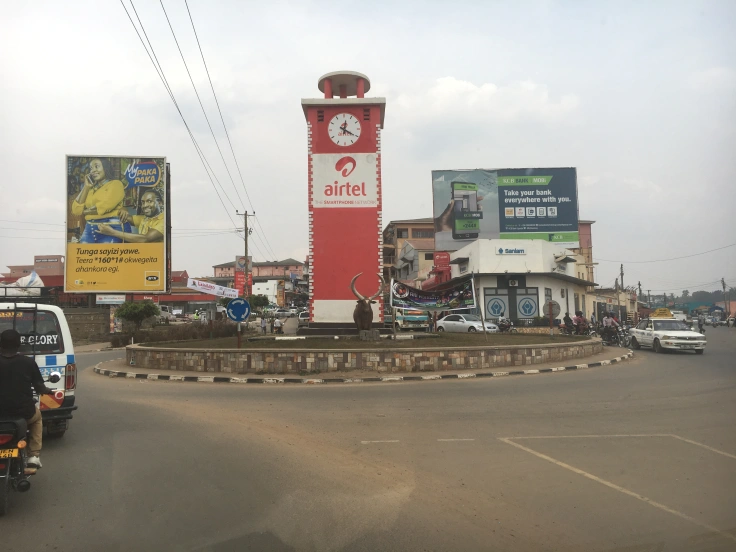
The drive was sooooo long…9 hours to be exact. The road past Mbarara was full of potholes, so the driving went even slower here.

Fortunately, I was able to sit in the front for the entire trip with our driver/guide Noor, so I was able to take in all of the views from my open window on the passenger side.

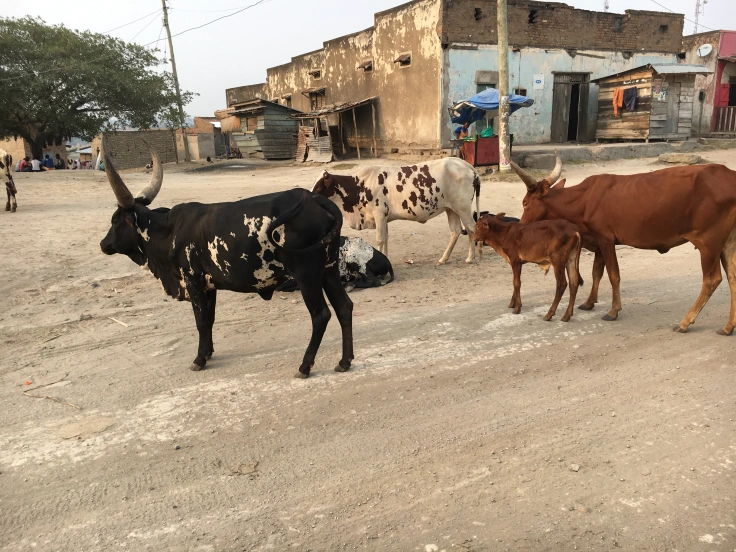
We passed the most gorgeous tea plantations that covered the hills and plains of the Western Rift Valley like a blanket of green in the Bushenyi District. We were actually able to walk through one on the third day when passing back through, but here are some pictures of what these fields look like.
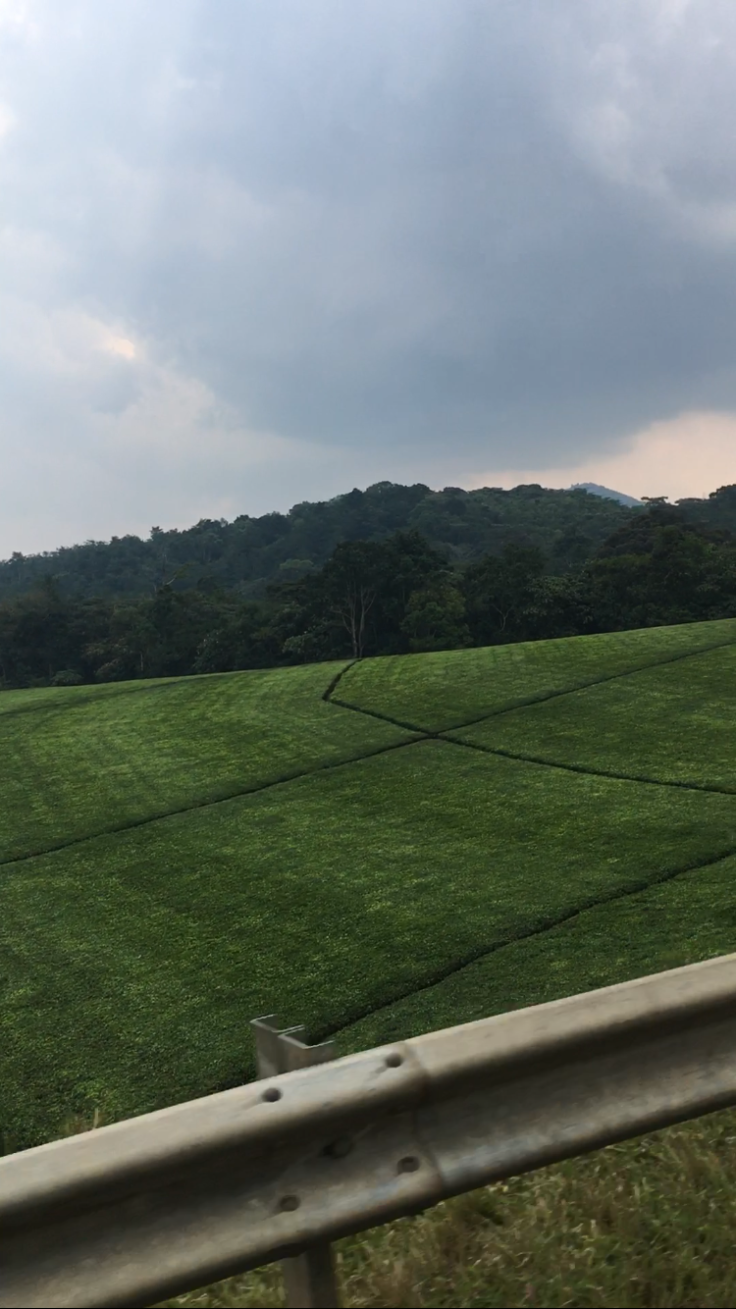
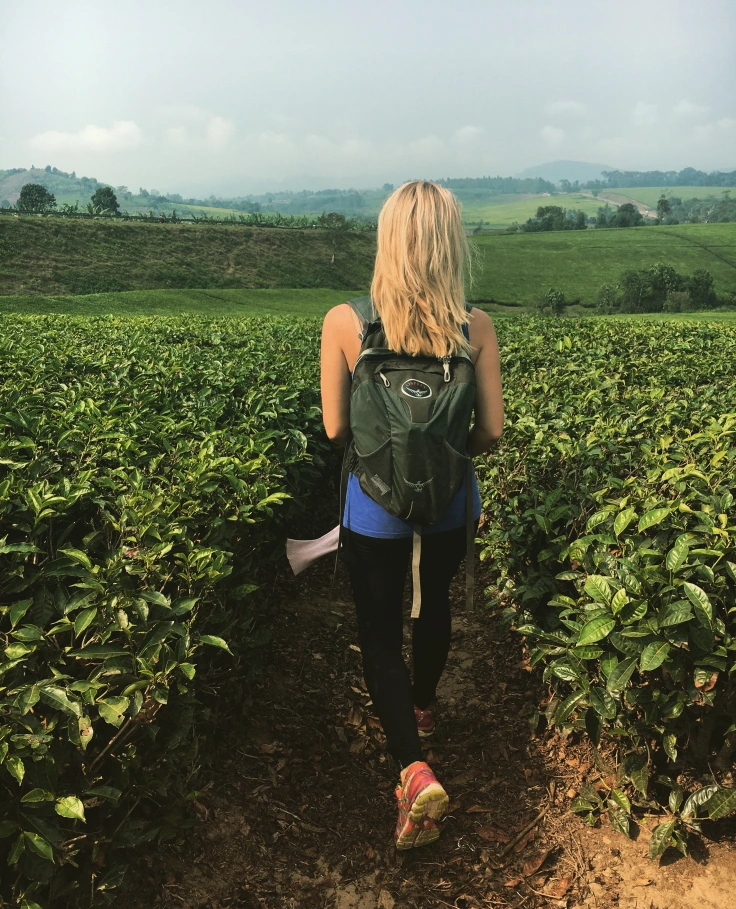
Tea production is becoming a huge part of the Ugandan economy. Indians introduced tea to Uganda in the 19th century, yet production almost stopped in the 1970s as war devastated the country and the ruthless dictator Idi Amin expelled all Asians from the country, confiscating much of their property in the process. Tea production picked back up when stability returned in the 1980s. While many of the larger estates are currently owned by foreign Indian companies, there is a big effort to ensure local ownership and to support Ugandan producers, particularly small farmers. It is estimated Uganda is currently producing tea at a rate of 10% of its potential capacity, so there is a lot of room for expansion. Sadly, global climate change may halt Uganda’s ability to produce tea as soon as 2050 if it continues at the current pace.
Before arriving at our accommodations at the Queen Elizabeth Bush Lodge, we stopped by the salt mining lake at the village of Katwe.

The salt lake was formed by a volcanic eruption about 10,000 years ago, and the mining activity employs hundreds of local workers. Each day, the workers “break” the salt crystals that have formed at the top of each pool, and eventually they collect the crystals from the bottom of the lake. They then wash them and grind them into smaller crystals for consumption. Katwe exports about 70% of the salt produced to other countries in East Africa.
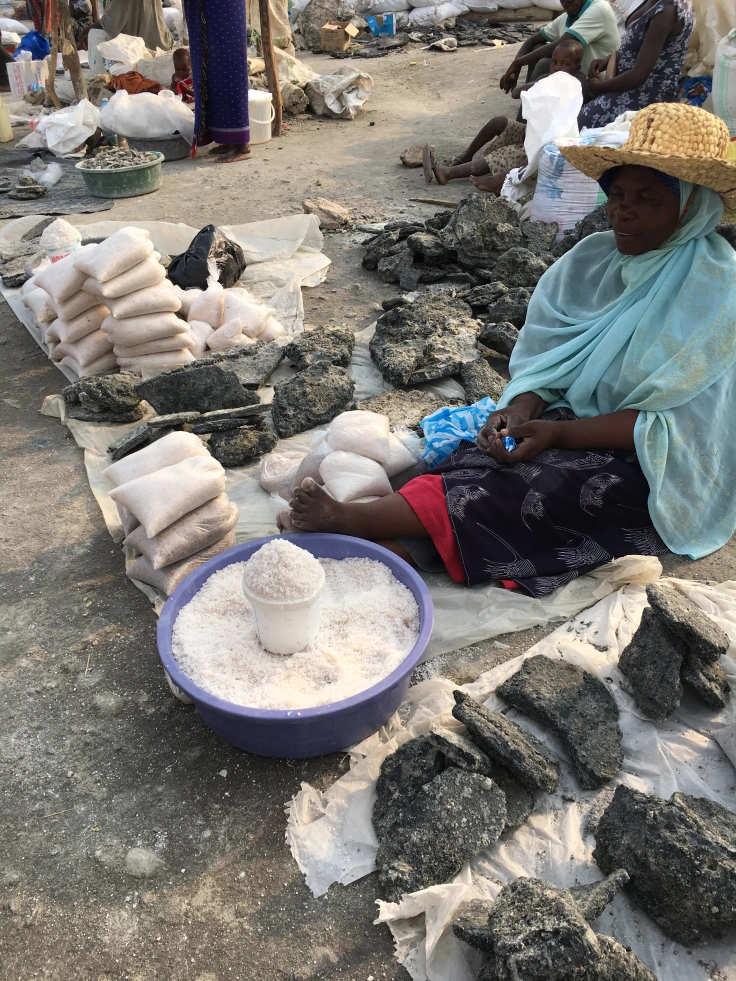

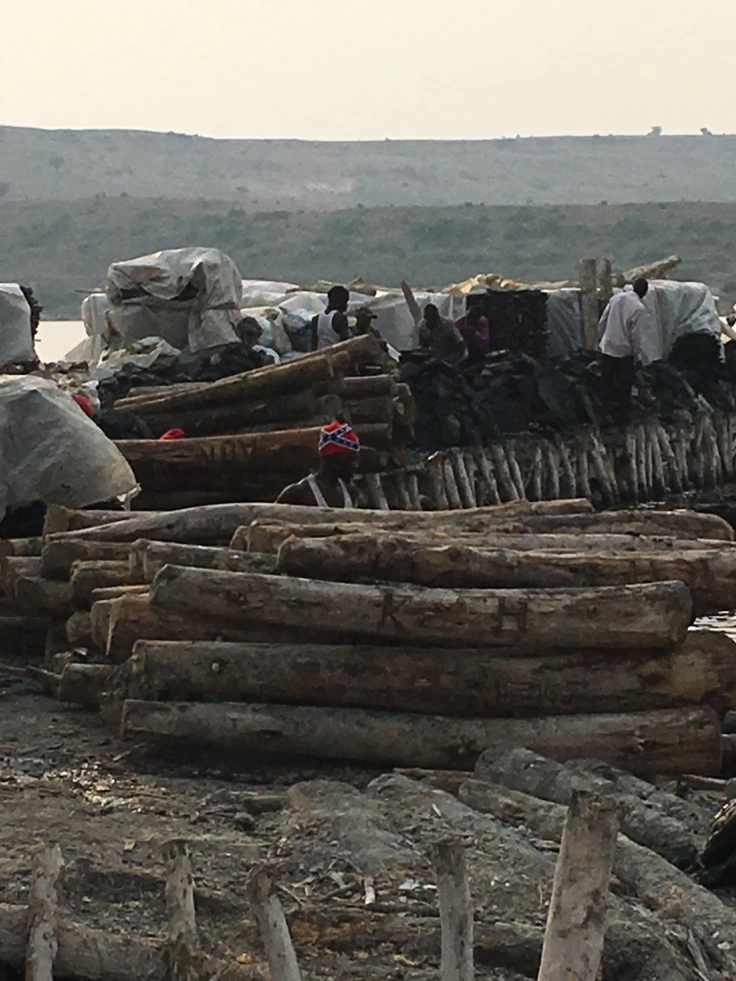
After Katwe, we continued on to the bush lodge. For the first night, I had booked a standard tent, being the budget-minded traveling law student that I am. For the second night, they did not have any available tents, so I was “forced” to upgrade to a banda…but I wasn’t complaining!

We had a 4-course dinner under the stars at the dining area of the camp overlooking the Kazinga Channel, which connects Lake George to Lake Edward. I heard hippos and warthogs outside my tent as I fell asleep that first night…I was so exhausted I didn’t wake up once!

Day 2:
I woke up at 5:30am, had breakfast at the dining area at 6am, and was on the truck with Noor for our game drive by 6:30am. The sunrise over the savannah was so beautiful as we made our way toward the areas where our guide knew we could spot the Big 5 (except rhinos, which sadly aren’t in this park).


I spotted everything I wanted to see…
Elephants…


Buffalo…
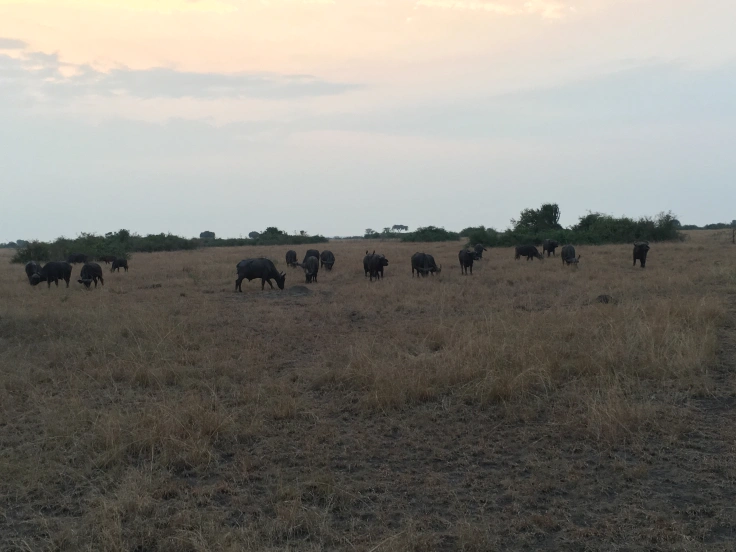
This bush buck…they are known to be loners and only are spotted with other bush buck when mating…

Uganda kob..
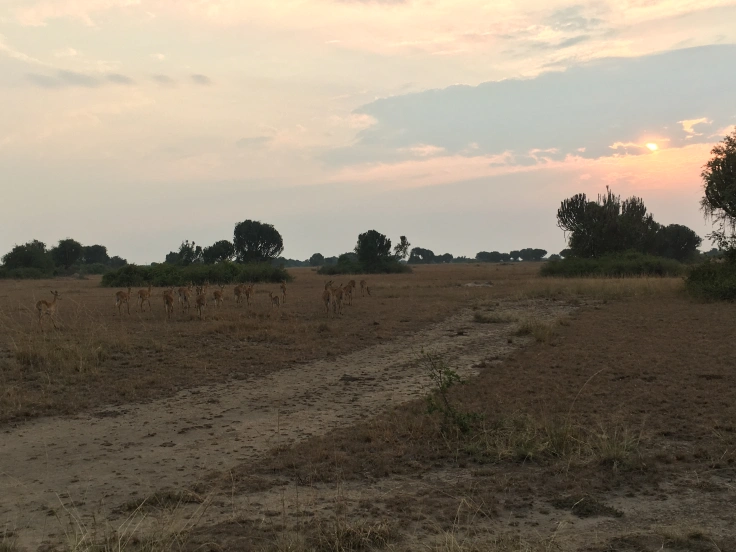
This gorgeous leopard…it was amazing to see her so close…

…and my male lion. But…I will never look at lions the same way now. Our lion had just finished hunting this buffalo, and was panting heavily with his eyes halfway closed. However, the way he chose to start eating his buffalo left a LOT of questions in all of our minds as we looked down at him from the safari truck. WHY did he eat the buffalo THAT WAY? It was truly so gross. (Warning: if you’re about to eat anything, you may want to skip this picture). I have to say…this ruined The Lion King a little bit for me.
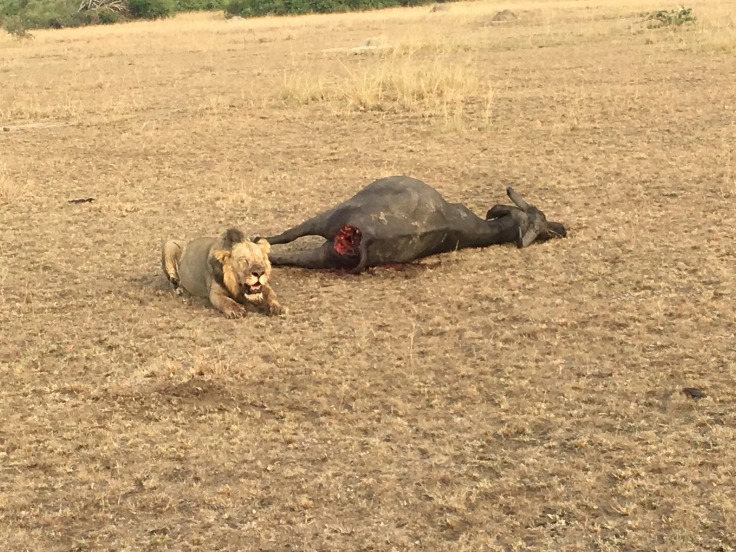
After our game drive, we continued our journey with a 2 hour drive around the famous crater lakes. These lakes, like Lake Katwe, were formed by volcanic activity several thousand years ago. We didn’t see any game here, but the views were breathtaking still.

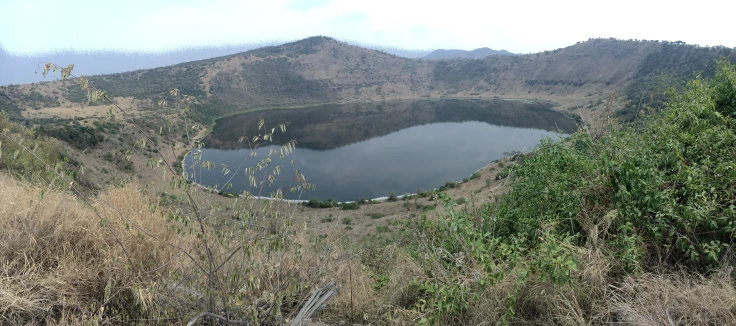
The lakes reminded me so much of what I saw in Bolivia last summer, which makes me wonder if the volcanic activity occurred when South America and Africa were still joined as one continent.

As we drove around the lakes deep in the bush, our truck was swarmed by infamous tsetse flies! These are known for carrying the dreaded African Sleeping Sickness, but according to Noor this disease no longer exists. (“If it did, I’d be dead by now because I’ve been bitten so many times,” he said.) I was bitten twice (it felt like a small bee sting), so hopefully he’s right!
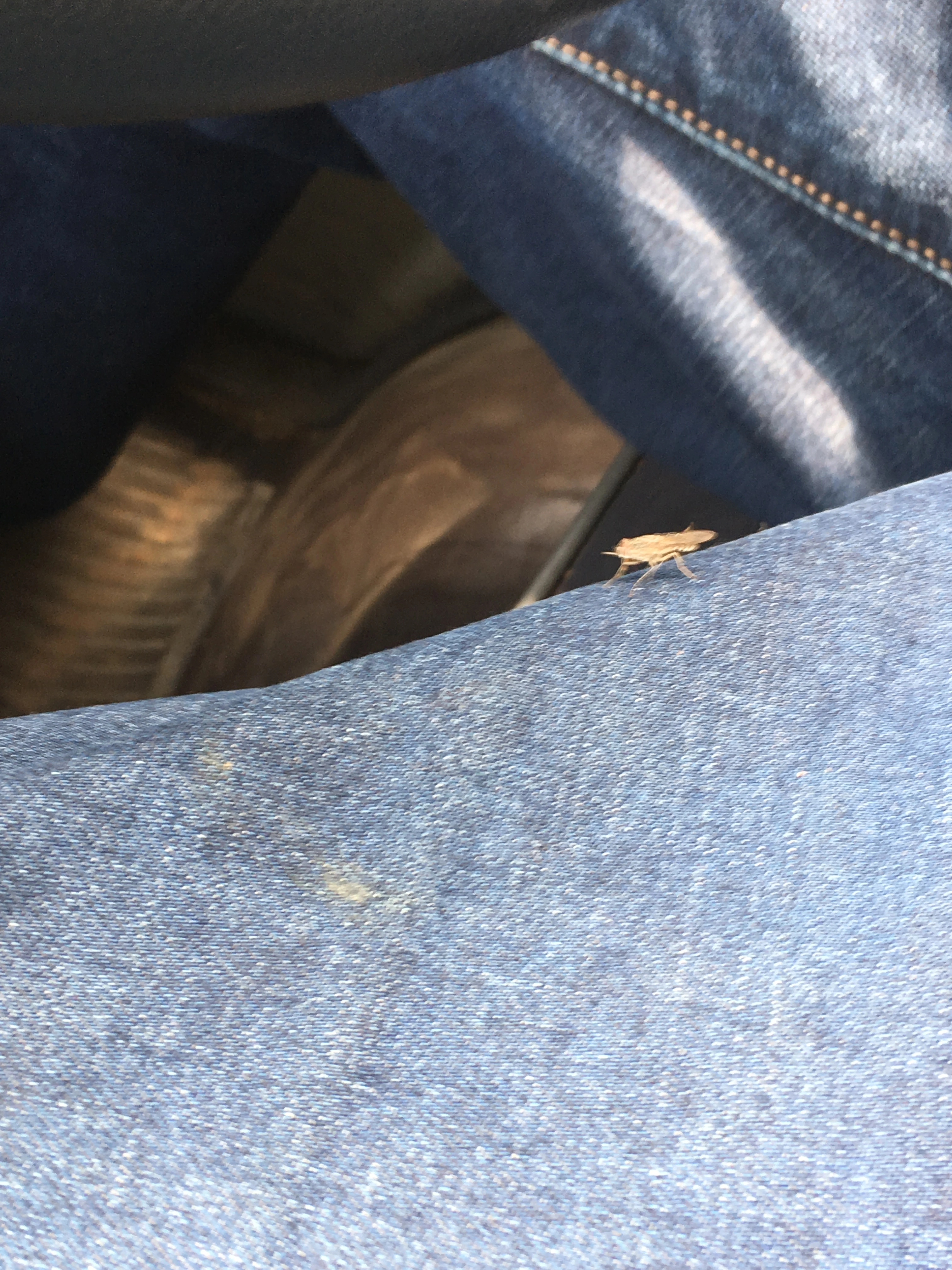
After the crater lakes drive, we had all gotten our appetite back a bit post-lion encounter, so we stopped for lunch at the restaurant in the park. I ate my vegetables and rice while looking out over the buffaloes and elephants drinking their water in the Kazinga Channel.

In the later afternoon, we took a 2 hour boat cruise along the Kazinga Channel and into the mouth of Lake Edward, which runs along the DRC border. Our boat spotted a crocodile, elephants, buffalo, impala, water buck, and what was probably close to 100 hippos (not exaggerating!) Our boat even hit a hippo, which I was not happy about. 😦 He seemed to be ok though.
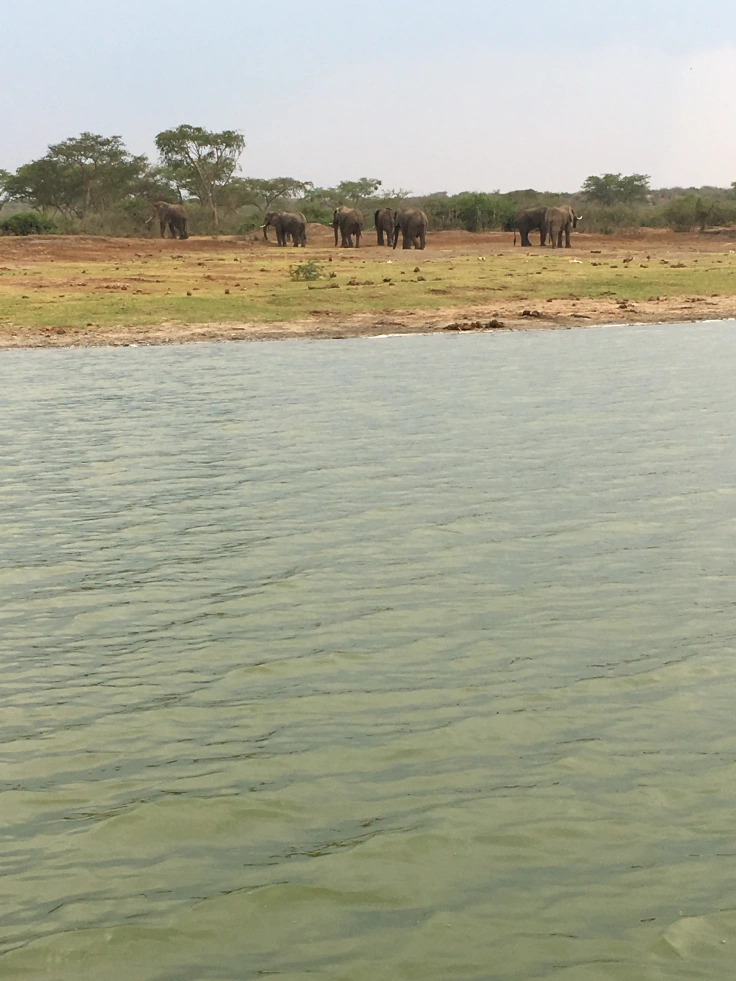

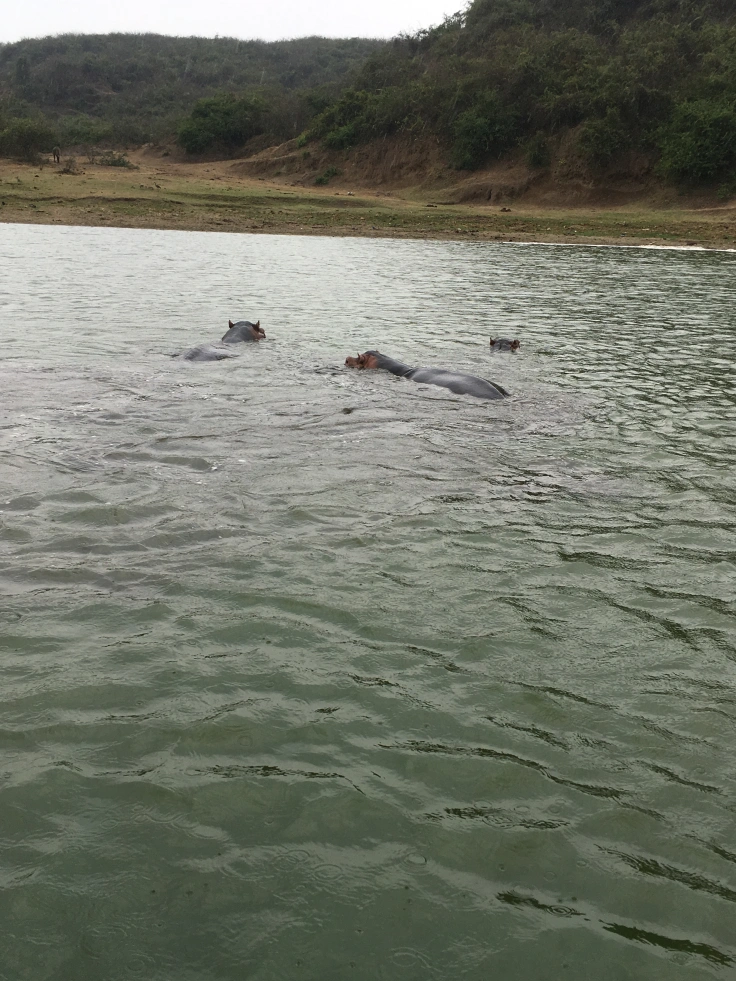
My favorite part of the boat cruise was when we sailed into the mouth of Lake Edward and saw about 30 of the local village men leaving in their canoes for a night of fishing.
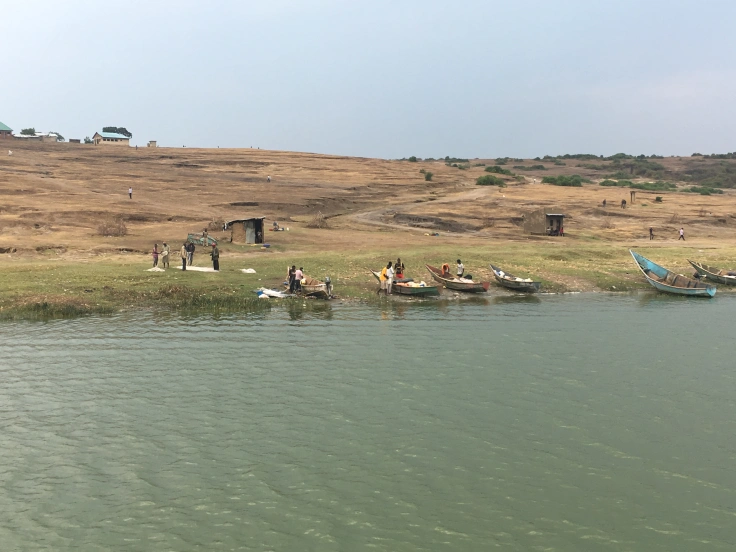
Because they live on national park land, these men must earn their livelihood solely from fishing and cannot farm the land. They fish at night and then barter their fish for food in the market during the day to feed their families. Each boat contained two fishermen, and they rowed out into the lake past swarms of hippos. They are so dedicated and brave, and I felt almost embarrassed watching them from my comfortable tourist position on the boat. Our guide informed us that 30% of the park fees we paid go to support schools and infrastructure in their village. Yet to see their dedication, work ethic, and bravery in person was truly humbling and inspiring.

After the boat ride, we made our way back to the bush camp, where I moved into my banda for the night!
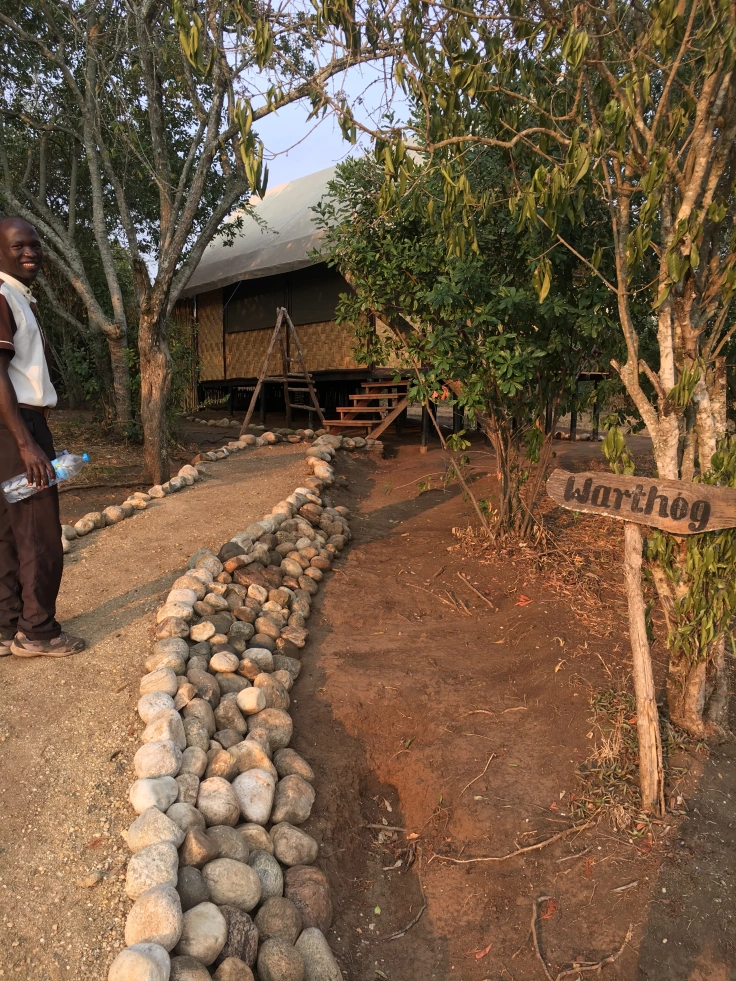
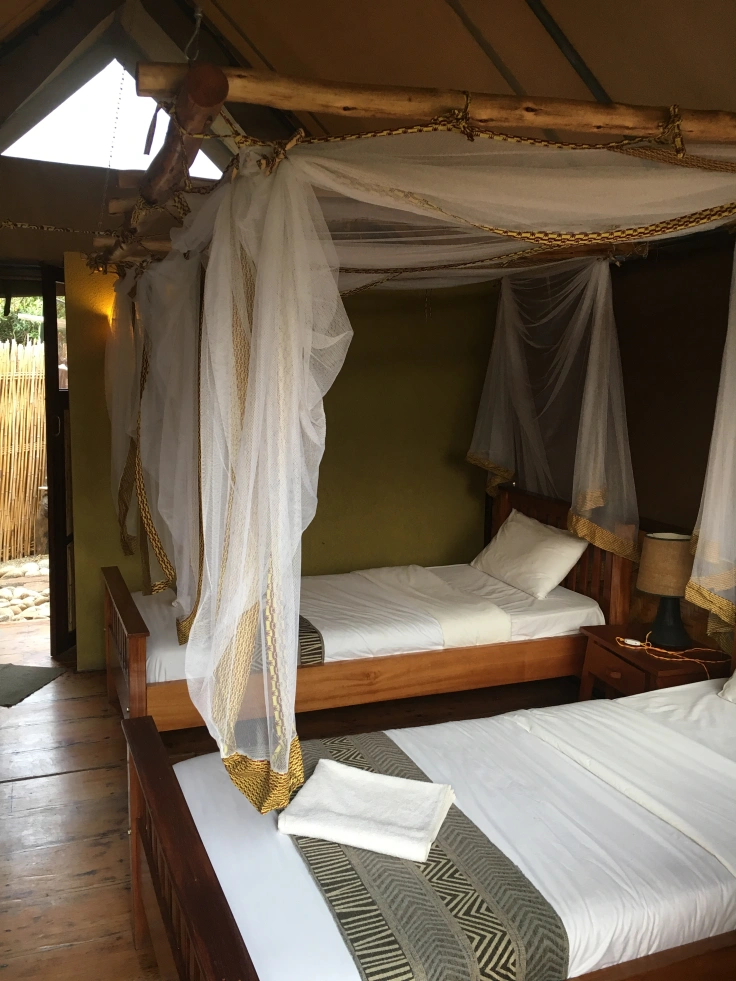

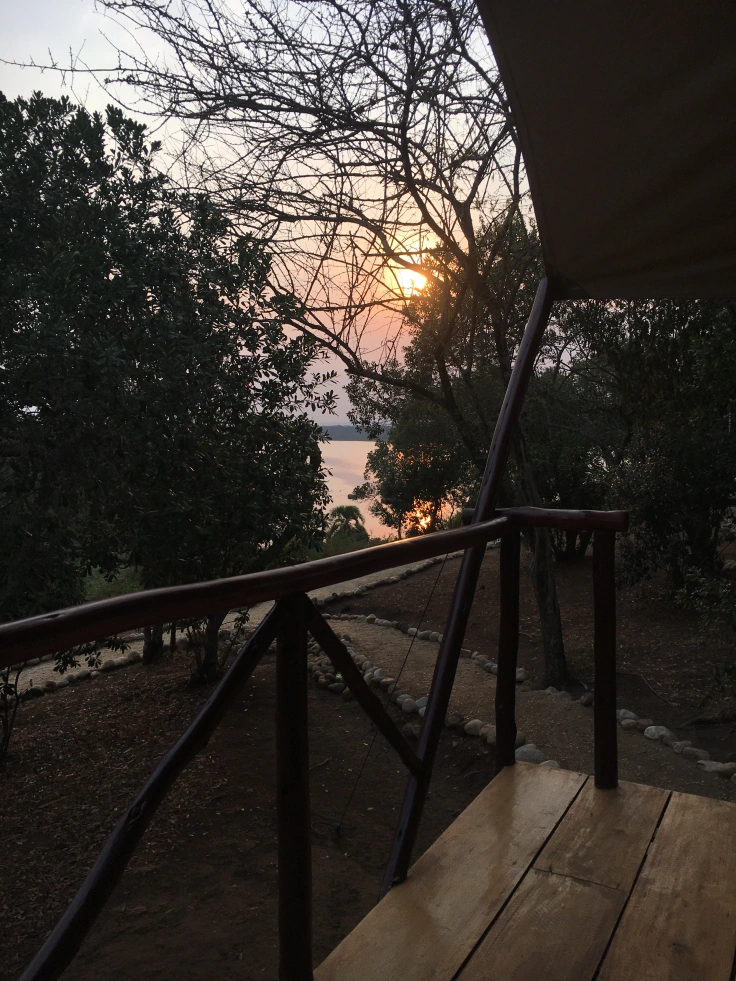
Hippo, warthogs, hyenas, and even elephants and lions are regularly spotted in and around the camp. For this reason, I had to have a personal escort between the dining area and my banda after dark, as the bandas are further removed from the center of the camp than the tent area.
After dinner, I sat on my porch in complete darkness and silence, looking at the thousands of stars in the sky and listening to all the animals enjoying their nightlife around the Kazinga Channel just below. I felt safe, as an armed guard with a flashlight was stationed next to my banda for the night, and could assist me if I needed to leave for any reason (but again, I couldn’t help but feel humbled at the dedication and bravery of his profession, and I was so grateful for him!) I heard elephants and lions twice respectively, and listened to the constant sounds of the birds, warthogs, hippos, and insects as I slept like a baby for the second night in a row. (Or as Noor says, “I slept like a baby, without the crying!”)
Day 3:
The next morning began just as the previous one had—5:30am wake up, 6am breakfast, and 6:30am departure. This time, we loaded the truck and headed back toward Kampala, stopping at the Kalinzu rainforest along the way for a morning of chimpanzee trekking. We hiked through the dense forest for about half an hour before locating the chimpanzees stationed in the tall trees above. The forest was so thick and beautiful, and it reminded me so much of the beautiful time I spent hiking alone in Monteverde, Costa Rica back in January.

Once we located the chimps, we stopped and watched for about an hour. I camped out on the rainforest floor and just took it all in. While it was fun to watch the chimps, to me it was even more fun to listen to them talk to each other. Sadly, it was hard to get any good pictures of them, but I will post some videos of the sights (and especially the sounds!) to my Instagram soon!
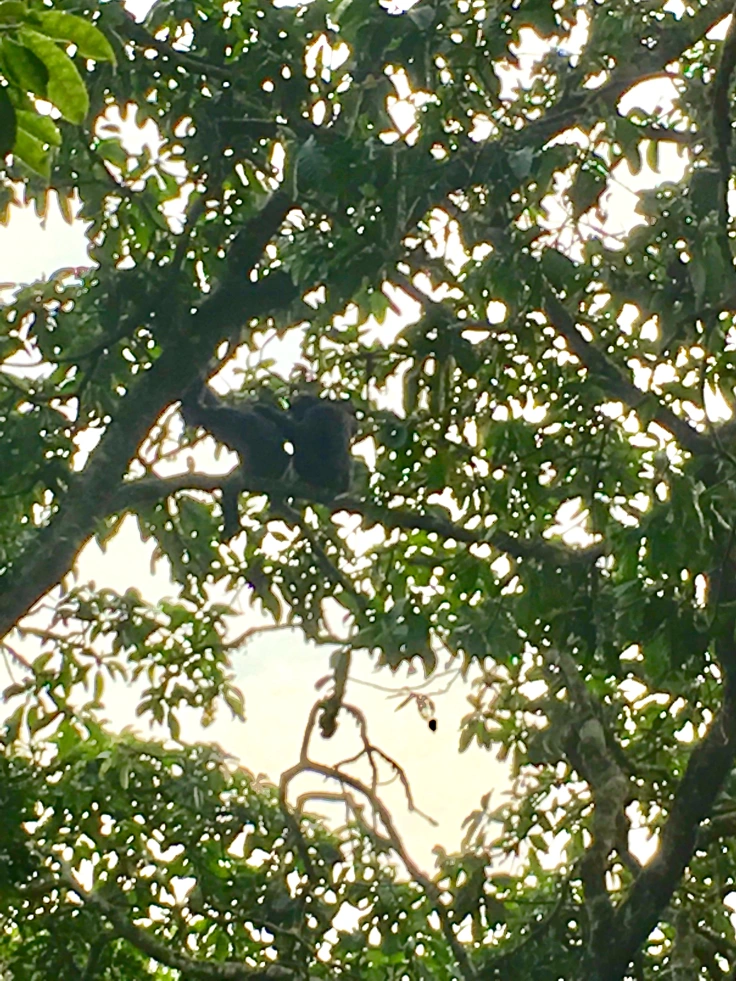
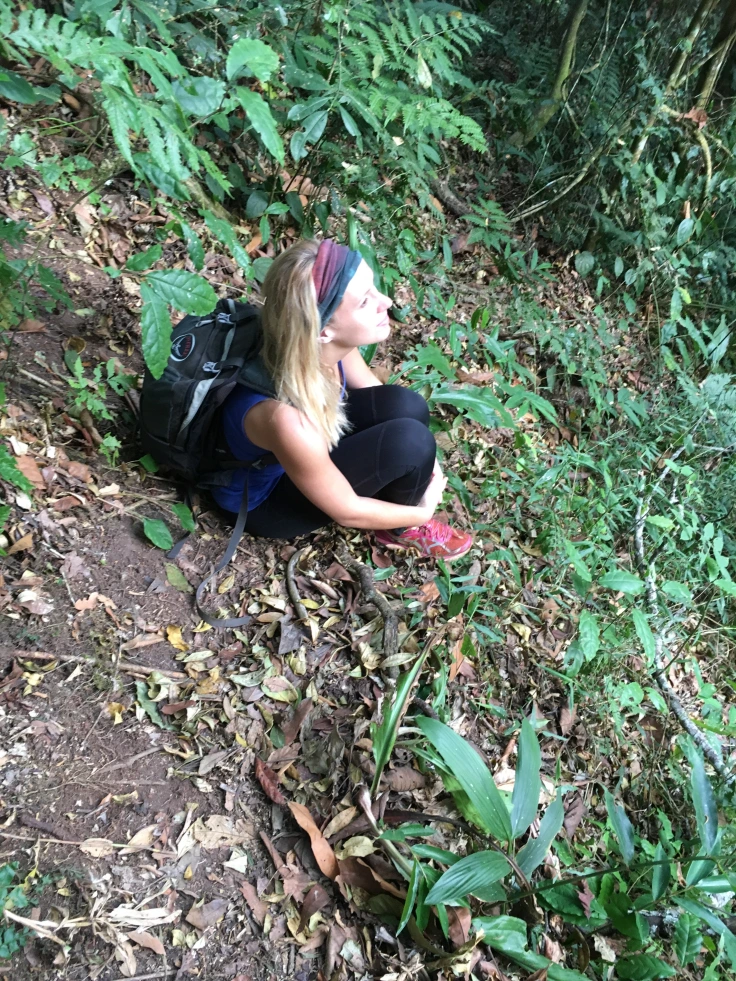
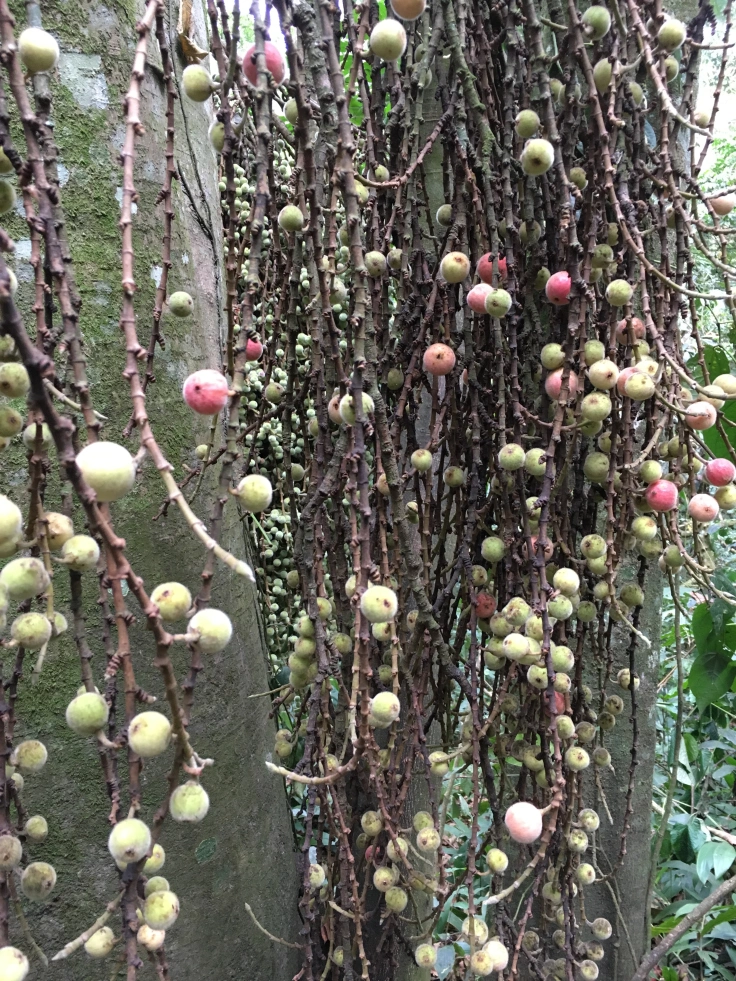
After spending a few hours in the rainforest, we briefly visited the Ankole Tea Estate before hopping back on our safari truck and making the long journey back to Kampala. We stopped in Mbarara and Masaka again, as well as at a local roadside produce stand where I bought fresh mangoes for 1000 UGX (about 30 cents USD).
Once I finally made it home, I was so tired, so dirty, but oh so satisfied from the beauty and magic of the Western Rift Valley. While I was fortunate to take in all of this beauty on holiday, I am moved to recognize the economic challenges that so many local people there face. I am so grateful for their hospitality—the number of times children and adults alike waved at our safari truck is innumerable. I was especially humbled to stay in such a luxurious place knowing that the villages around me had none of this. I’ve been having a lot of thoughts lately about economic opportunity and disparity in Africa, which I’ll write about soon. But I’m forever changed in a positive way by how the people welcomed me and our group into their home for a few very special days.
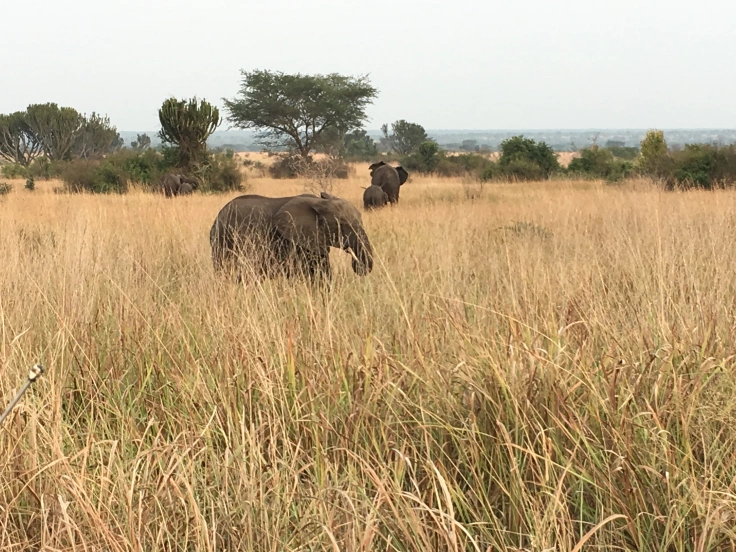
July 18, 2017 at 5:19 pm
these photos are amazing! incredible landscape 🙂
LikeLike
July 18, 2017 at 5:35 pm
Thank you! 🙂 it was an amazing place to visit. I highly recommend it!
LikeLiked by 1 person